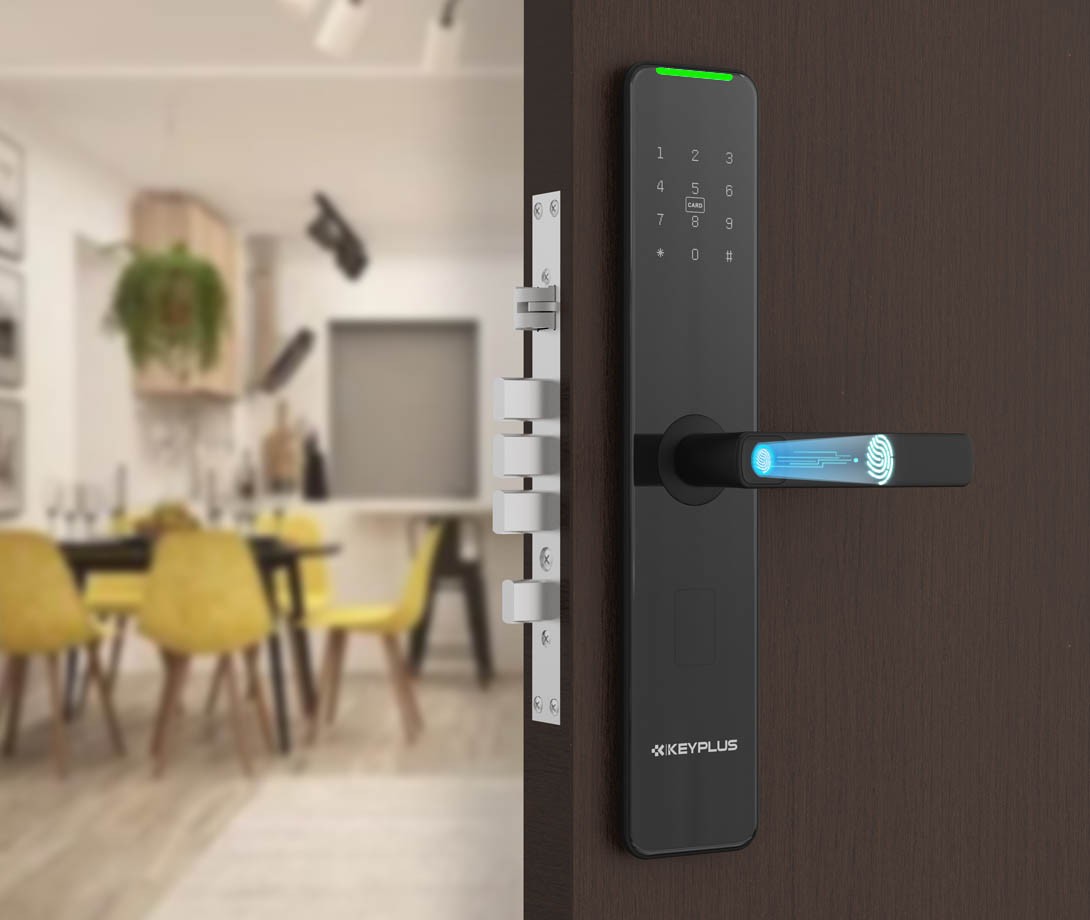Are Fingerprint Locks Any Good? A Complete Security Review
In recent years, fingerprint locks have become increasingly popular for homes, offices, and even smartphones. They promise convenience—no more fumbling for keys or remembering passwords—just a quick touch, and you’re in. But are they actually secure? Do they work reliably? And should you trust them over traditional locks?
This article examines the pros and cons of fingerprint locks, how they compare to other security methods, and whether they’re worth using.
How Do Fingerprint Locks Work?
Fingerprint locks use biometric technology to identify users based on the unique patterns of their fingerprints. Here’s how they typically function:
- Enrollment – When you first set up the lock, you scan your fingerprint, and the system converts it into a digital template (a mathematical representation of your fingerprint’s ridges and valleys).
- Storage – Instead of storing an actual image, the lock saves an encrypted version of your fingerprint data.
- Authentication – When you place your finger on the scanner, it compares the new scan with the stored template. If they match, the lock opens.
Most modern fingerprint locks also include additional security features, such as:
- Anti-spoofing technology (to detect fake fingerprints)
- Multiple fingerprint storage (allowing several users to register)
- Backup entry methods (like PIN codes or physical keys in case of failure)
Advantages of Fingerprint Locks
1. Convenience – No Keys or Passwords Needed
- Forget about losing keys or forgetting combinations—just use your finger.
- Faster than typing a code or searching for a key.
2. High Security (When Implemented Well)
- Fingerprints are unique to each person, making them harder to duplicate than a stolen key or guessed password.
- Unlike keys, you can’t accidentally lend your fingerprint to someone else.
3. Difficult to Copy (But Not Impossible)
- While movies show criminals lifting fingerprints from surfaces, real-world spoofing requires high-quality replicas, which are hard to make.
- Most modern fingerprint scanners have anti-spoofing measures to detect fake prints.
4. Audit Trail (Some Advanced Models)
- Some smart locks record who accessed them and when, which is useful for businesses or shared spaces.
Disadvantages of Fingerprint Locks
Despite their benefits, fingerprint locks have some significant drawbacks.
1. Fingerprints Can’t Be Changed
- If a hacker steals your password, you can reset it. But if your fingerprint data is compromised, you can’t change your fingers.
- This makes biometric data a high-value target for cybercriminals.
2. False Rejections & False Acceptances
- False Rejections (Type I Errors) – The lock fails to recognize a legitimate fingerprint due to dirt, moisture, or minor injuries.
- False Acceptances (Type II Errors) – The lock mistakenly opens for an unauthorized fingerprint (rare, but possible with advanced spoofing).
3. Environmental Factors Affect Performance
- Wet, dirty, or damaged fingers may not scan properly.
- Extreme temperatures can affect some sensors.
4. Privacy and Legal Concerns
- Unlike keys or passwords, fingerprints are biometric data, which raises privacy issues.
- In some legal cases, authorities can force you to unlock a fingerprint-secured device (whereas passwords may be protected under self-incrimination laws).
5. Power Dependency
- Most electronic fingerprint locks require batteries, which can die unexpectedly.
- Cheaper models may not provide sufficient warning before battery failure.
Fingerprint Locks vs. Traditional Locks: Which Is Better?
| Feature | Fingerprint Lock | Traditional Key Lock |
|---|---|---|
| Convenience | High (no keys needed) | Low (risk of losing keys) |
| Security | Strong (if high-quality) | Moderate (pickable, duplicable keys) |
| Changeable Credentials | No (fingerprints are permanent) | Yes (locks can be rekeyed) |
| Durability | Depends on power source | Usually very durable |
| Cost | More expensive | Cheaper |
When Fingerprint Locks Are a Good Choice:
For homes with multiple users (no need to make extra keys).
For offices or businesses (tracking access is easier).
For tech-savvy users who want keyless convenience.
When Traditional Locks Might Be Better:
In extreme weather conditions (some fingerprint sensors fail in cold/heat).
For high-security areas where biometric data breaches are a concern.
For budget-conscious users (mechanical locks are cheaper).
How to Make Fingerprint Locks More Secure
If you decide to use a fingerprint lock, follow these best practices:
- Choose a High-Quality Lock – Cheap models may have weak sensors or poor encryption.
- Enable Multi-Factor Authentication (MFA) – Use a fingerprint and a PIN or key for extra security.
- Keep the Sensor Clean – Dirt and grease can cause recognition failures.
- Register Multiple Fingers – In case one is injured or dirty.
- Check Battery Life Regularly – Avoid getting locked out due to dead batteries.
Final Verdict: Are Fingerprint Locks Worth It?
Fingerprint locks offer great convenience and decent security, but they aren’t flawless. They’re an excellent choice for:
- Homes where family members often lose keys.
- Businesses that need access logs.
- Tech-friendly users who want fast, keyless entry.
However, they may not be ideal for:
- Extreme environments (very hot/cold climates).
- High-security facilities where biometric data breaches are a concern.
- Budget users who prefer low-cost, reliable mechanical locks.
The Best Approach? Combine Security Methods
For maximum safety, use fingerprint + PIN or fingerprint + physical key backup. This way, you get the convenience of biometrics with the reliability of traditional security.
Would you trust a fingerprint lock? The answer depends on your needs—but for most people, they’re a good upgrade over traditional keys.
This article is written in clear, natural English for an international audience, avoiding brand names and focusing on unbiased security analysis. Let me know if you’d like any refinements!
Post time: Jun-12-2025


